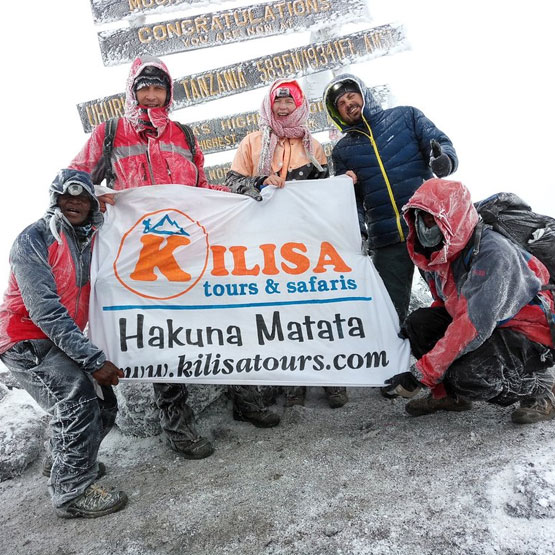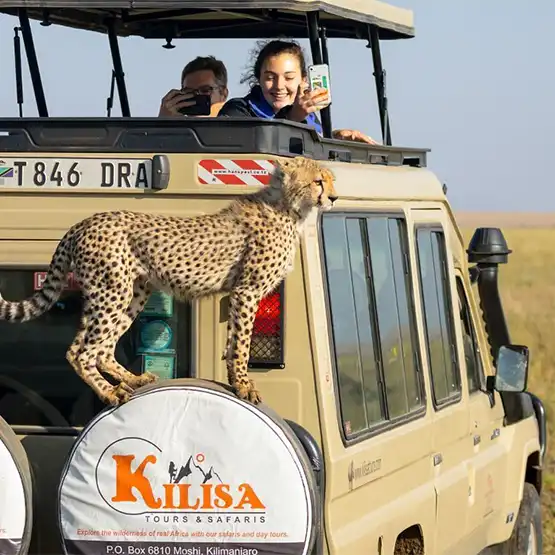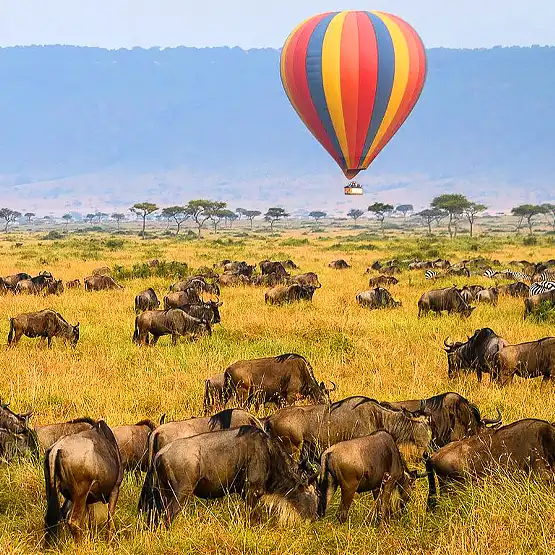Climbing Mount Kilimanjaro is an exhilarating experience, but timing can make or break your adventure. Surprisingly, the mountain’s climatic conditions vary greatly, dictating the best time for a summit attempt. Many climbers are often unprepared for the drastic weather changes and altitude challenges they face.
The most favorable months to climb Kilimanjaro are from January to March and June to October. These periods offer clearer skies, lower rainfall, and relatively warm temperatures, providing better visibility and a safer climbing environment. Despite its tropical location, Kilimanjaro’s summit can be extremely cold, making the choice of timing crucial for a successful climb.

When Is the Best Time to Climb Kilimanjaro
Climbing Mount Kilimanjaro is a dream for many adventurers around the world. The best time to do this depends on various factors, including weather and personal preference. The most popular months for climbing are January through March and June through October. Both these periods fall during the dry seasons in Tanzania. Clear skies and more stable weather make for a safer and more enjoyable climb.
During the dry seasons, the trails tend to be less muddy and more accessible. This reduces the risks associated with wet and slippery conditions. According to this post, January is considered one of the best times to climb due to perfect weather conditions. Less rain and clearer views of the summit enhance the overall experience. Plus, warmer temperatures make camping more comfortable.
While the dry season is ideal, some climbers might prefer the challenge of the wet season. The trails are less crowded, offering a greater sense of solitude. Nevertheless, the wet season comes with its set of challenges. Increased rainfall can lead to muddy trails and tougher climbing conditions. If you’re prepared for these challenges, it can still be a rewarding experience.
For novice climbers, the dry season is generally recommended to have a safer and more enjoyable trek. It is easier to plan, and you get the benefit of milder weather conditions. For additional insights, here is the article on a guided tour that covers climbing Mount Kilimanjaro combined with a safari experience. Investing in a guided tour can enhance your overall adventure. Expertise and support from seasoned guides are invaluable.
Overview of Climbing Seasons
Mount Kilimanjaro has two main climbing seasons: the dry season and the wet season. The dry season is from January to March and June to October. During this time, climbers enjoy clearer skies and warmer temperatures. These conditions make it the most popular time for trekking. However, this means the trails can get crowded.
The wet season consists of two periods: April to May and November. Climbing during these months is more challenging due to increased rainfall. The trails can become muddy and slippery. This can make the climb more difficult. But, fewer climbers choose this time, so it offers a more solitary experience.
Each season has unique advantages and challenges. Some climbers prefer the easier dry season for its predictable weather. Others seek the thrill of wet season for the quieter trails and lush scenery. Either way, proper preparation is key. Make sure to research and plan accordingly.
For those interested in guided tours, various options are available throughout the year. Professional guides can offer invaluable support. They help with navigation and safety. Many tours, such as those by Kilisa Tours, are designed for various skill levels. This ensures a memorable and safe adventure.
Advantages of Climbing During Dry Season
Climbing Kilimanjaro during the dry season comes with several benefits. One of the biggest advantages is the clear weather. Clear skies provide stunning views of the landscape and the summit. This makes the climb not only safer but more enjoyable. It’s easier to appreciate the beauty of Kilimanjaro without clouds and rain obstructing the view.
Another advantage of the dry season is the stable and milder temperatures. While it can still get cold at higher elevations, the overall conditions are more comfortable. This is especially important when camping overnight. Dry, warm weather means better sleep and less hassle with wet gear. These factors contribute to a more pleasant climbing experience.
The trails are generally less muddy and slippery in dry weather. This reduces the risk of accidents and injuries. The paths are easier to navigate, making the climb less strenuous. For beginners, this is particularly beneficial. Here is the article that offers more insights on climbing conditions.
The dry season also means more climbing groups and people on the trail. This can create a sense of community and camaraderie. Meeting fellow climbers from around the world can be inspiring. Together, you can share tips, stories, and motivation. It’s an experience that adds to the adventure of climbing Kilimanjaro.
Challenges of Wet Season Climbs
Climbing Kilimanjaro during the wet season presents unique challenges. One of the main issues is the heavy rainfall. The persistent rain can make the trails extremely muddy. This makes the climb more strenuous and can lead to accidents. Wet conditions also increase the risk of slipping and falling.
Another challenge is dealing with damp gear and clothing. Keeping your belongings dry can be tough when it rains constantly. Wet clothes can lead to discomfort and even hypothermia. It’s crucial to pack waterproof gear and extra layers. This way, you can stay dry and warm despite the wet conditions.
The weather is also more unpredictable during the wet season. Sudden downpours can catch you off guard. You’ll need to be flexible and ready for weather changes. This can be mentally taxing. Proper planning and preparation are vital.
Visibility is often reduced due to thick clouds and fog. This makes navigation harder and can diminish the scenic views. However, some hikers find the misty landscapes enchanting. It adds a mysterious feel to the trek. It’s a different kind of beauty.
Lastly, fewer climbers choose the wet season. This means you will have less company on the trails. While some might see this as a downside, others cherish the solitude. It allows for a more personal and reflective experience. Solitary trails can be very peaceful.
In conclusion, while wet season climbs are challenging, they can also be rewarding. Proper preparation and a positive mindset are key to enjoying the journey. Consider checking out this post for expert advice. Experienced guides can make the experience more manageable.
Considerations for Beginner Climbers
For those new to climbing, preparing for Kilimanjaro is crucial. First, acclimatization is key. The high altitude can cause sickness. Spend a few days getting used to the elevation. This will help your body adjust.
Next, physical fitness is important. Beginners should start training months in advance. Focus on cardio and strength exercises. Long hikes with a backpack are recommended. This way, you build the stamina needed for the climb.
Equipping yourself with the right gear is essential. Waterproof clothing, sturdy boots, and a warm sleeping bag are must-haves. Pack light but include all essentials. Make sure to test your gear beforehand. This ensures everything is comfortable and functional.
Understanding the weather is also important. The dry season is generally easier for beginners. As this post mentions, weather conditions can greatly impact your climb. Make sure to check the forecast and plan accordingly. Being prepared for sudden changes is vital.
Finally, consider joining a guided tour. Experienced guides can provide valuable support. They help with navigation, safety, and motivation. This can make a huge difference. For more information on guided tours, check out here is the article.
Insights from Kilisa Tours for Successful Summit
Kilisa Tours offers several valuable tips for a successful climb. One critical piece of advice is to climb slowly. This helps your body acclimate to the altitude. A slower pace reduces the risk of altitude sickness. It also gives you time to enjoy the stunning views.
Proper nutrition and hydration are equally important. Kilisa Tours emphasizes drinking plenty of water. Staying hydrated helps keep your energy levels up. Eating a balanced diet during the climb is vital. The right food fuels your body for the demanding trek.
Rest is another key factor. Climbers should make sure to sleep well before and during the trek. Good sleep improves your stamina and mental focus. Kilisa Tours recommends taking regular breaks to rest your legs. This helps prevent exhaustion and keeps you strong for the summit push.
Investing in quality gear can make a big difference. Kilisa Tours suggests bringing layers of clothing for varying temperatures. Waterproof outer layers are essential. Comfortable boots with good grip help navigate the rocky trails. Tested and reliable gear can eliminate many potential problems.
The expertise of guides is a major asset. Kilisa Tours employs experienced guides who know the mountain well. They offer essential support and motivation. Their knowledge of the best routes and spots ensures a smoother climb. Relying on a skilled guide can significantly enhance your experience.
For more detailed information and to book a guided tour, here is the article that could be extremely helpful. Taking their advice to heart can greatly improve your chances of summiting Kilimanjaro. Preparation and expertise are the keys to success.






